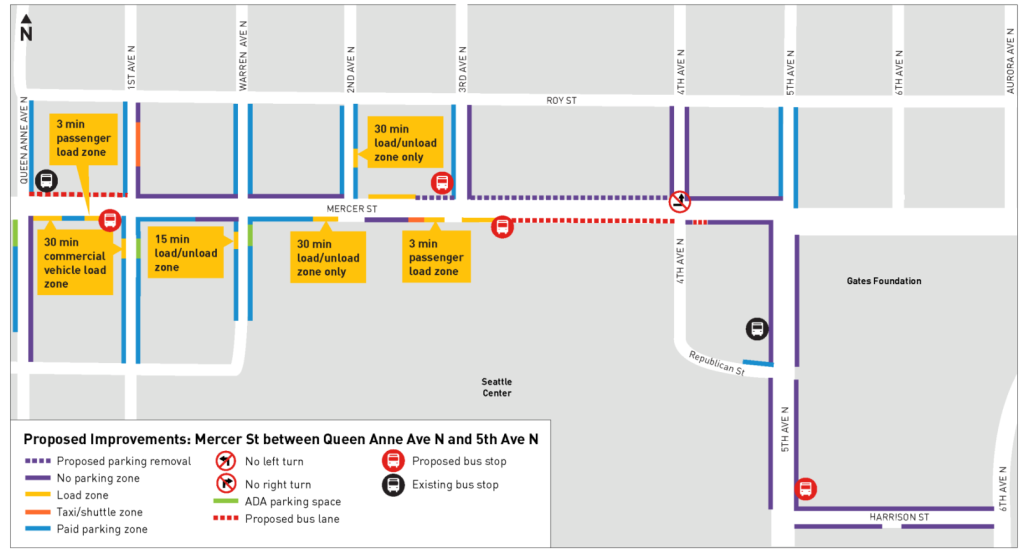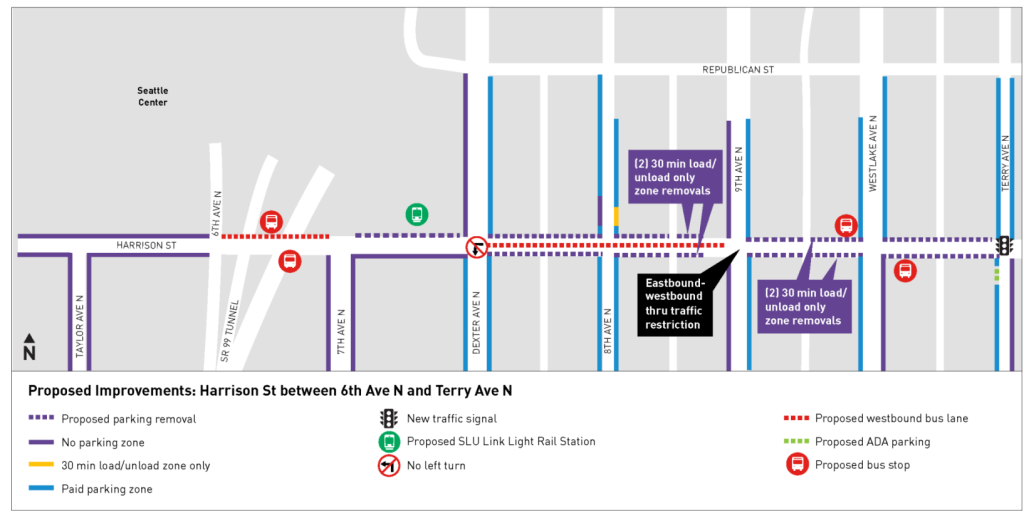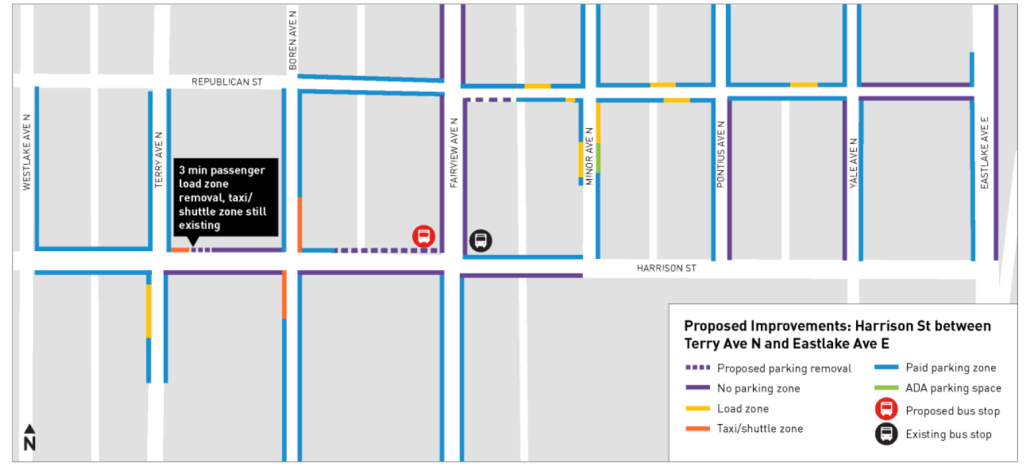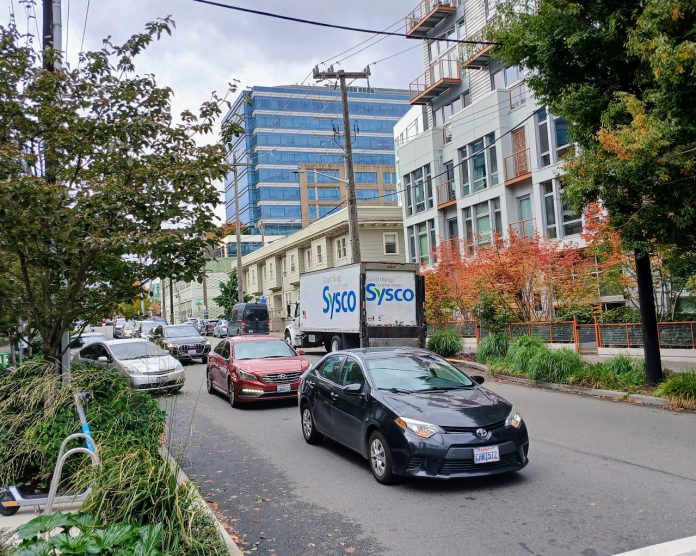
As transit advocates continue to push for additional bus priority to speed up the often-delayed Route 8 on Denny Way, the Seattle Department of Transportation (SDOT) is advancing plans for dedicated bus lanes a few streets away. The Harrison and Mercer Transit Access Project, which would create a new transit pathway connecting South Lake Union and Uptown, continues to move forward as a priority project, in spite of no clear plan to move bus service onto the corridor.
The Urbanist has been spotlighting the Harrison and Mercer Street project since 2022, when SDOT started seeking regional funding for the new pathway that is expected to connect to a Harrison Street light rail station as part of the Ballard Link Extension in 2039. The funding application noted that Route 8 riders experience a collective 825 hours of delay every single weekday due to traffic congestion and lack of bus priority on Denny Way, and that a new pathway could serve both the Route 8 and future bus routes envisioned in King County Metro’s long-range plan, Metro Connects.
“[This project] can offer transit riders a significant reduction in travel time as well as provide new connections through South Lake Union,” a 2024 grant application stated.
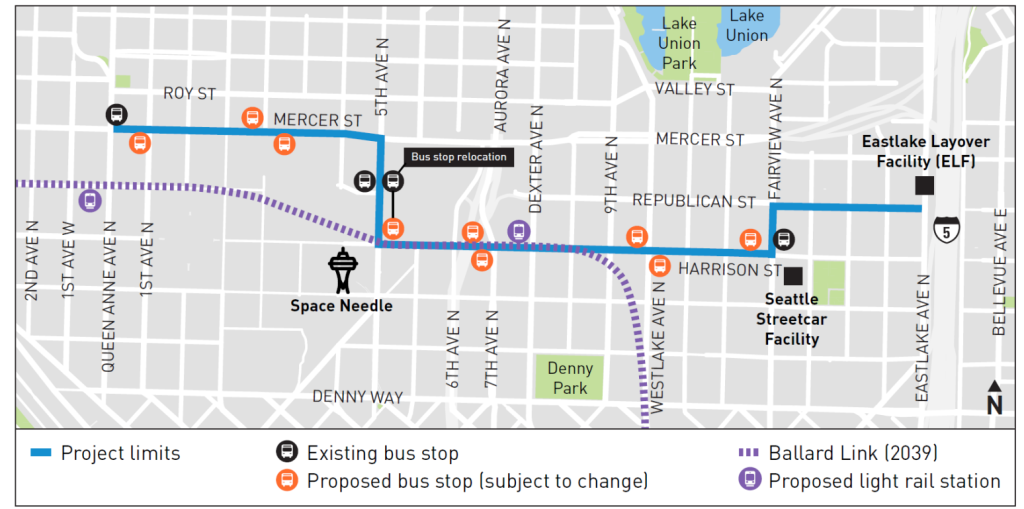
But both Metro and SDOT have since reiterated that moving existing bus service off Denny Way isn’t a near-term goal for either agency. The City reaffirmed its decision not to advance plans for Denny Way bus-only lanes, but SDOT acknowledged the street would be key connection to a future light rail station.
“We’re committed to maintaining Route 8 service along Denny Way – an essential corridor serving major employers, the Seattle Center, and a future light rail station,” SDOT wrote in a blog post in late August.
This summer, SDOT released 30% designs for the Harrison and Mercer corridor, laying out initial concepts for getting buses through the area. The designs show targeted parking removal and limited stretches of bus-only lanes, with no bus priority planned east of 9th Avenue N. The agency hopes to start construction as soon as 2027. However, since Metro is not planning to reroute Route 8, the new bus stops and red paint could potentially sit unused, as riders sit in traffic in Denny Way, to the frustration of all.
Hope for Route 8 could be on the horizon, though. Last week, Councilmember Alexis Mercedes Rinck announced she’s advancing a budget proviso that would ask SDOT to pilot a bus-only lane on Denny Way to get stuck riders out of traffic, as part of a broader “Better Bus Lanes” campaign.
If that pilot is actually able to be implemented, it raises questions about advancing the Harrison and Mercer Street project now, in the face of transit speed and reliability needs across the city. King County Metro does not appear likely to follow through on plans to create a new route through South Lake Union for years.
While current SDOT leadership has made it pretty clear that it doesn’t see a bus lane on Denny Way, the idea does have a supporter in Katie Wilson, the frontrunner challenging incumbent Mayor Bruce Harrell in next week’s general election matchup.
The amorphous nature of the Harrison/Mercer project isn’t stopping some transit advocates from pushing to make the Harrison and Mercer Street project better, to prevent a weakly designed project from getting locked in. In a letter approved in August, the Seattle Transit Advisory Board (TAB) pushed SDOT to think more boldly about transforming Harrison and Mercer for buses as part of a longer-term vision for transit in South Lake Union, pointing to potential ridership gains that come from providing service along Mercer Street.
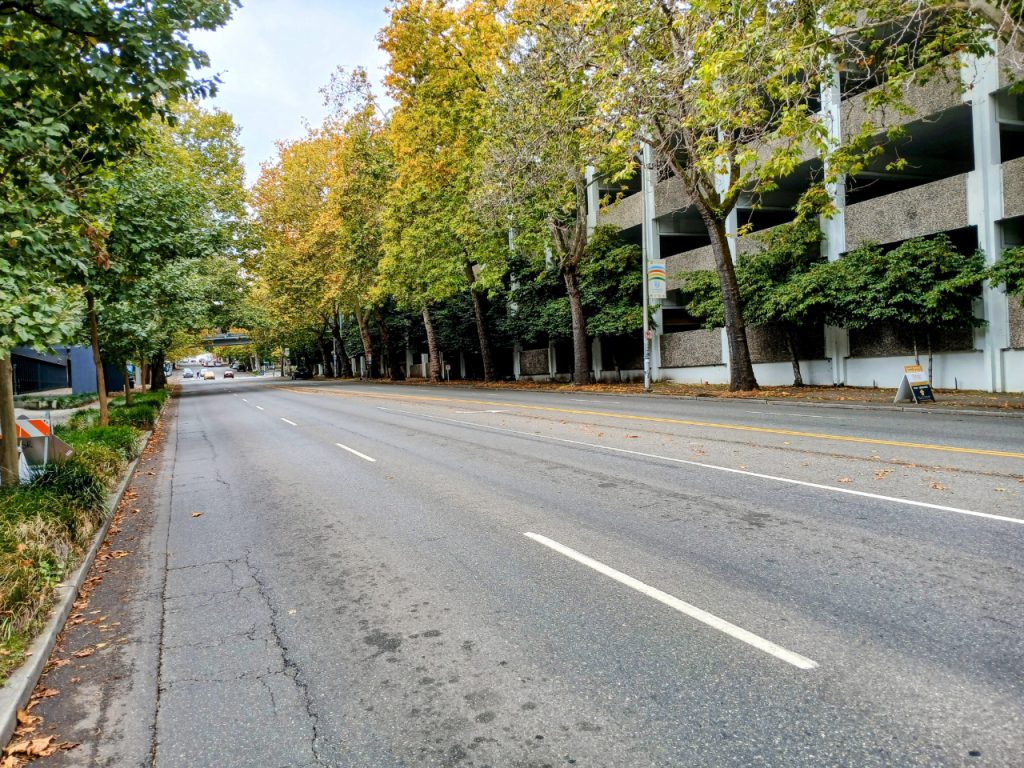
“These street updates would improve transit frequency, reliability, and safety for riders, as well as increasing ridership on Mercer St,” the TAB wrote in a letter also endorsed by the Fix the L8 campaign. “However, these proposed design updates do not go far enough in prioritizing transit in this corridor and it would be a missed opportunity to not do more.”
The board called the idea of only adding transit priority to 50% of Mercer Street “unacceptable.”
“The proposed pocket bus lane conversions would only minimally help Metro buses skip traffic,” the letter stated. “Buses would still get stuck in traffic in the right lane in between the bus lane conversions and buses would struggle to get out of their pocket bus lane.”
On top of all that, a Harrison Street light rail station could well be on the negotiation table at the Sound Transit board, as the agency grapples with avenues to fill a $20 to $30 billion shortfall in funds needed to complete the full ST3 buildout. This past June, Seattle Sound Transit Program Director Sara Maxana told the Seattle Design Commission that the team was spending time in 2025 on environmental analysis of a route alignment that only includes the station near Denny Way, as the agency prepares to release the Draft Environmental Impact Statement (DEIS) by the end of this year.
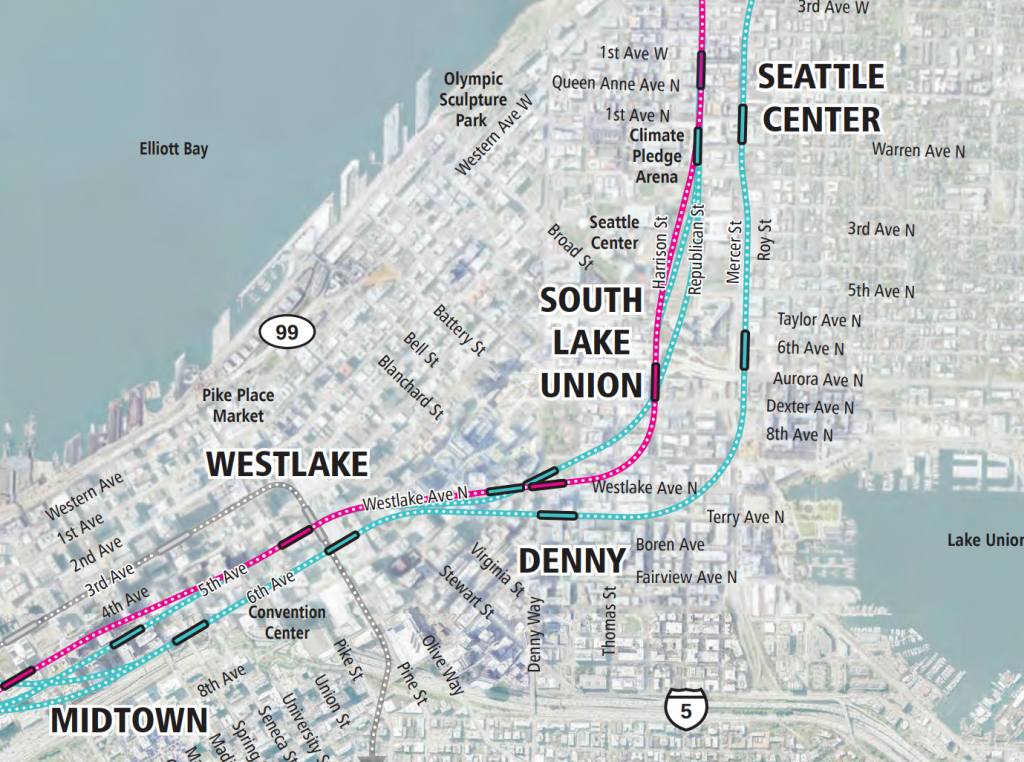
“One of the additional alternatives that is being considered in the DEIS is station consolidation, which would consolidate the Denny/South Lake Union Station into one location and shift the station a little bit further west,” Maxana said. “It has a lot of real advantages in minimizing some of the impacts to Westlake Avenue, in particular, reducing costs. However, it moves from five stations to four stations, and there are some impacts to service and to transit integration. So this is the type of thing that, even though it’s not a preferred alternative, we’re going to focus some energy on this alternative.”
Like the Avalon Station in West Seattle, jettisoning a station along the Ballard Link seen as duplicative is likely to be attractive to the Sound Transit board, especially given their region-wide lens. And the Harrison Street station’s location right next to the SR 99 highway tunnel portal makes it hard for Seattle urbanists to push back as full-throatedly as they might otherwise like to.
Ultimately, the Harrison and Mercer Street corridor project may well be exactly what Seattle’s transit future needs… but it’s very hard to square it right now against the city’s transit present.
Ryan Packer has been writing for The Urbanist since 2015, and currently reports full-time as Contributing Editor. Their beats are transportation, land use, public space, traffic safety, and obscure community meetings. Packer has also reported for other regional outlets including BikePortland, Seattle Met, and PubliCola. They live in the Capitol Hill neighborhood of Seattle.

